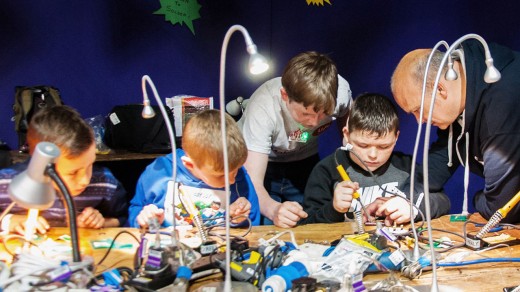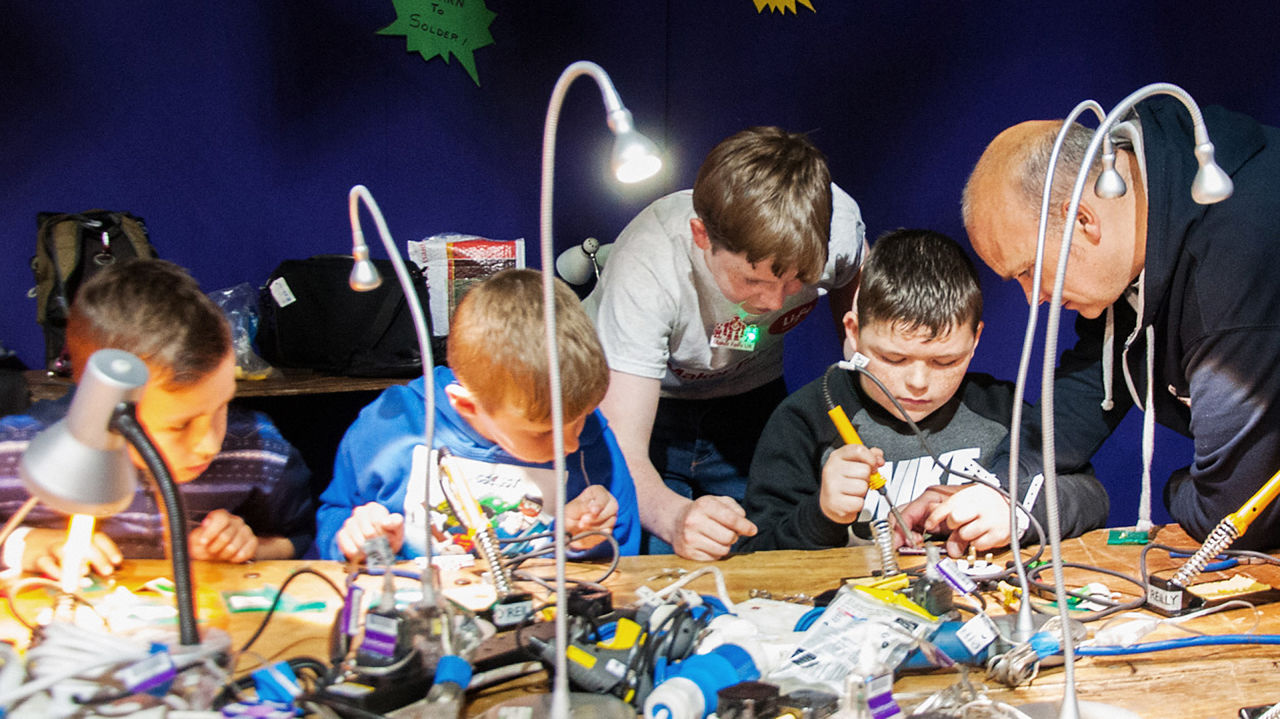Maker Faire Founder Dale Dougherty On The past, existing, And on-line way forward for The Maker motion
What began a decade ago as an influential magazine—and was a liked global sequence of events—is about to become a brand new social network.
April 29, 2015
“more than mere customers of technology, we are makers, adapting expertise to our desires and integrating it into our lives. a few of us are born makers and others, like me, develop into makers almost without realizing it.”
With these phrases, technology writer Dale Dougherty opened his column in the ultimate problem of Make magazine, dated February 2005. As its contents indicated, the new publication used to be aimed on the form of arms-on technologists who might hitch a disposable Kodak movie camera to a kite. Or crack open an iPAQ PDA to interchange its battery. Or whip up a hydra-headed networking cable with five connectors on one end.
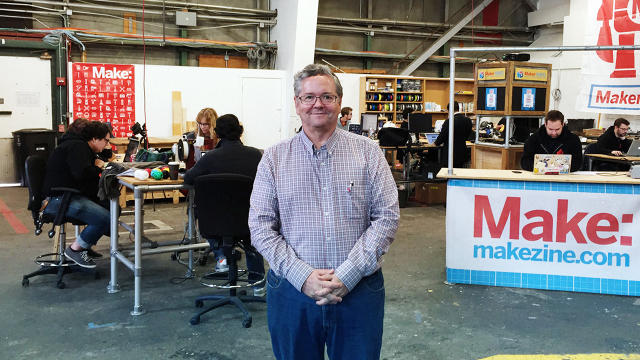
In his column, Dougherty was articulating his e-newsletter’s mission, because the editor of every new journal does. nevertheless it grew to become out that he was once also coining a time period—maker—and making a manifesto for a motion that has advanced in ways that no one may have guessed with any precision. within the April/may just 2015 problem of Make, for example, that ethos is mirrored in tales on 3-d-printing a quadcopter, cloning a fig, and setting up a Raspberry Pi-powered undercover agent digital camera sufficiently small on your cat to put on.
in short, Dougherty’s 2005 vision proved to be, smartly, visionary. It now encompasses an array of thriving leisure pursuits, systems, educational efforts, and companies, from Raspberry Pi to MakerBots to Arduino microcontrollers and past. people who have never viewed a copy of Make, including thousands and thousands of kids, are pursuing actions imbued by way of its spirit.
That wasn’t exactly Dougherty’s plan. “I had this feel that doing things physically used to be going to be fascinating,” he concedes. however he’s additionally fast to show that there have been makers long prior to he named and championed them, pointing to establishments akin to widespread Science journal (centered in 1872) as evidence.
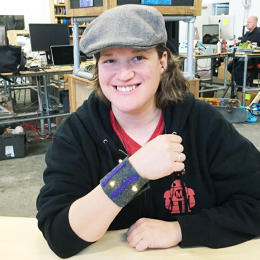
still, with out Dougherty’s rallying cry, there would possibly no longer were any obtrusive overarching conception linking themes as disparate as robotics, 3-d photography, and leathercraft. Make, he says, “took plenty of things that may otherwise be separate, and stated they belong collectively.”
As the idea took off, it speedy go off the pages of the magazine. the primary Maker Faire—a gathering of makers younger and outdated—happened in the San Francisco Bay house in April 2006. lots of of such situations have considering that taken location all over the arena; 1,000,000 persons are anticipated to attend them in 2015.
Now Dougherty and his team at Maker Media are getting ready to launch MakerSpace, a brand new site that’s but some other manifestation of the speculation Dougherty first spelled out within the first difficulty of Make. I took the 10th anniversary of Make and the announcement of MakerSpace as an opportunity to mirror on the maker movement’s previous, present, and future with Dougherty and Gregg Brockway, who cofounded trip websites Hotwire and TripIt sooner than becoming a member of Maker Media as CEO in October of last 12 months.
“Martha Stewart For Geeks”
For its first eight years, Make used to be part of O’Reilly, the venerable tech media firm. Dougherty, a longtime collaborator of founder Tim O’Reilly, had an attractive striking track file for settling on and helping to popularize the following giant thing: In pre-Make days, he began the first industrial website online and gave a name to the phenomenon that become universally referred to as “net 2.zero.”
With that background, you might have expected Dougherty to launch Make as a web site. instead, he wanted it to be physical. “The journal as a tangible object kind of expressed what making used to be about,” he says.
The magazine began as a thought Dougherty made throughout a cab experience in Portland, Oregon, for a journal he pitched as “Martha Stewart for geeks.” “Tim used to be simply indulgent, you may say,” Dougherty remembers. “He said, ‘Go ahead, are attempting it.’ I was once ready to do it as an test. we would by no means carried out a journal. We simply dove in.”
At a time when tech magazines have been collapsing in droves, Make debuted with a subject matter that was once as much e-book as magazine: 200 meaty pages, few advertisements, and a $15 cover price. “I did not suppose there were any advertisers, in reality, when we began, so we had to use that edition,” Dougherty explains.
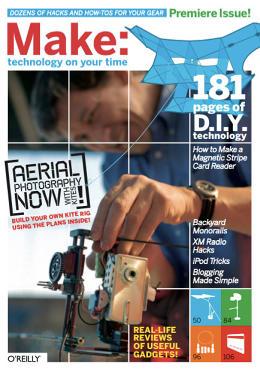
though the term maker would come to exude certain vibes—it conveys a way of curiosity, adventure, and mental engagement a ways beyond anything you get from, say, taking part in Flappy hen—Dougherty coined it as a result of he needed an intentionally obscure approach to describe his new publication’s customers. “We’re now not going to name them readers or users, but makers,” he says, recalling his notion process. “It was only a rather neutral term that would imply a whole lot of issues. I nonetheless like it for that purpose.”
soon, he found that makers had been in all places. “when I began telling folks about it, they started out telling me what they did. Or they’d say, ‘that is what my brother does.'”
As Dougherty discovered that there have been makers everywhere, he began formulating plans for the Maker Faire. “I used to be assembly really fascinating [makers] who i’d not otherwise meet,” Dougherty recollects. “i assumed other folks would enjoy meeting them.”
Twenty-two thousand individuals showed up for the primary Maker Faire, which passed off at a fairgrounds in the San Francisco suburb of San Mateo in 2006. A year later, there have been two Faires attended by way of 66,000 folks. by using 2014, there have been 135 Faires around the world, attracting a total of 781,000 makers. The three largest displays—the Bay area, new york, and Rome—hosted 280,000 attendees whole in 2014. but in this day and age, somebody can observe for a license to prepare a native Mini Maker Faire. And from Edinburgh to Jerusalem to Bogotá , folks all over the place are.

“We wanted it to be fun, interactive, and surprising to folks,” says Dougherty of the original Maker Faire concept, which its site calls “part science honest, phase county truthful, and part something solely new.” “but the core of it was once to appear a maker in the eye and ask, ‘What is that this?'” nine years later, that is nonetheless what the Faires are about.
probably the most placing things about Maker Faires is that they attract attendees of all a long time and serve as a bonding expertise for fogeys and kids. “From the start, we were beautiful intentional about it being domestic-oriented,” Dougherty says. “I didn’t want to just have a geek convention. that is why we called it a Faire.”
New Digs, New desires
by way of 2013, when O’Reilly spun it off into an impartial firm known as Maker Media, Dougherty’s concept had blossomed into a trade that included Make journal and dozens of Make how-to books; the Maker Faires and a industry-to-industry event referred to as MakerCon; Maker Camp, an educational program operated in partnership with Google; and Maker Shed, an e-commerce web page that sells everything from $10 hovercraft kits to $2,500 three-D printers. Operations persevered at O’Reilly’s Sonoma County campus unless February of this year, when Dougherty and firm made a 50-mile southward trek over the Golden Gate Bridge and into San Francisco.
the new trade operations are in Levi’s Plaza, but the company’s showplace is Maker Media Labs, located within the exhibition middle of the Palace of wonderful Arts, a San Francisco landmark built for the 1915 Panama-Pacific world Exhibition (and as an unofficial social gathering of town’s restoration from the 1906 earthquake). In recent decades, it’s been occupied by using the Exploratorium—a museum, now relocated to a historical pier, that itself embodies a let’s-are attempting-it method to science and technology. having a look extra like a workshop than an editorial administrative center, the gap is filled with gadgetry similar to 3-D printers, computer-controlled routers, and stitching machines. It also has room for public occasions reminiscent of MakerCon, in an effort to be held right away ahead of the subsequent Bay area Maker Faire in could.

anyone who’s attended the bursting-at-the-seams flagship Bay space Maker Faire in recent years can attest to the fact that even the largest-scale actual-world experience can’t quilt the movement in its entirety. in reality, many people who practice to have their projects featured at a Faire should be grew to become down simply for lack of space.
And exhilarating although a Maker Faire can also be, it’s a fleeting experience. “there’s this in point of fact passionate, highly effective neighborhood surrounding the business,” says Maker Media CEO Gregg Brockway. “You see it most tangibly at Maker Faire, where you might have all these different communities coming collectively. For most of the people, that is a one- to two-day thing every year, after which they go away and we don’t truly discuss to them until the next Maker Faire.”
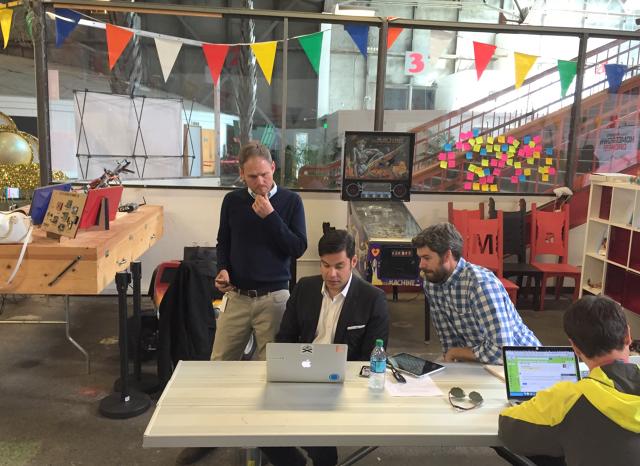
that is the place MakerSpace is available in. the most ambitious web-primarily based manifestation of Dougherty’s maker imaginative and prescient so far, it can be a social community designed to let makers share their initiatives with phrases, pictures, and movies. other contributors can browse projects, find ones that spark their creativity, and touch upon them.
MakerSpace has been running in a quiet, personal beta with a small selection of users. the company plans to extend it steadily, partly with the aid of letting in Maker Faire attendees. The web page will open up to the general public when it’s ready, and will be free. “Our mission is to encourage and boost more makers,” says Brockway. And the extra makers there are, the extra people there are who might subscribe to Make, purchase a Make e book, attend a Maker Faire, or purchase equipment from Maker Shed.
<div class=inline-carousel data-title="MakerSpace screens executive chairman, a gig that offers him leeway to proceed spreading the phrase concerning the maker community and fascinated about its future, as he is accomplished for a decade. A month earlier than we chatted, he'd attended a Maker Faire in Cairo, the first one held in an Arabic-talking u . s . a ..
“things are roughly advanced,” he tells me by the use of explaining what motivates him. “we can both ignore them or have interaction with them and make them work for us.” When the journal used to be new, he says, some individuals informed him that the idea that would possibly no longer supply an enough selection of tasks to maintain the newsletter in trade. A decade later, it’s clear that it can be a never-ending mission—and that makers will continue to make expertise work in delightfully unpredictable ways.
fast company , read Full Story
(160)

